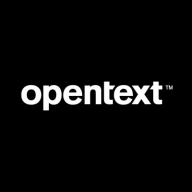

Acunetix and OpenText Core Application Security are competitors in the field of application security testing. Based on feature robustness and integration capabilities, OpenText Core Application Security appears to have the upper hand.
Features: Acunetix provides robust automated security testing featuring vulnerability scanning and an interactive application security testing module that enhances discovery of vulnerabilities. It includes a scheduling feature for scans and tailored attack parameterization. OpenText Core Application Security excels in application and source code scanning, dynamic testing, and its seamless integration within the DevOps cycle, which supports continuous security improvements.
Room for Improvement: Acunetix could improve its IAS tool, expand on OWASP Top Ten vulnerabilities, and make its advanced scan settings more user-friendly. It also faces challenges with false positives and report export functionality. OpenText Core Application Security requires enhancements in reducing false positives, speeding up dynamic scan capabilities, and offering better CI/CD tool integration alongside more comprehensive reporting options.
Ease of Deployment and Customer Service: Acunetix offers flexibility in deployment on-premises, in clouds, or hybrid setups but faces issues with slow customer support. OpenText Core Application Security also offers varied deployment options but stands out slightly for more responsive and helpful customer service when reached, although still reliant on ticket systems.
Pricing and ROI: Acunetix, once known for its value, now struggles with competitive pricing due to recent increases, making it less cost-effective, although ROI remains satisfactory for some. OpenText Core Application Security, while moderately priced, is valued for its feature-rich offering and integration capabilities, reflecting its strong ROI in security posture improvements rather than direct cost savings.
| Product | Market Share (%) |
|---|---|
| OpenText Core Application Security | 3.9% |
| Acunetix | 2.5% |
| Other | 93.6% |


| Company Size | Count |
|---|---|
| Small Business | 15 |
| Midsize Enterprise | 5 |
| Large Enterprise | 14 |
| Company Size | Count |
|---|---|
| Small Business | 16 |
| Midsize Enterprise | 8 |
| Large Enterprise | 43 |
Acunetix Web Vulnerability Scanner is an automated web application security testing tool that audits your web applications by checking for vulnerabilities like SQL Injection, Cross site scripting, and other exploitable vulnerabilities.
OpenText Core Application Security offers robust features like static and dynamic scanning, real-time vulnerability tracking, and seamless integration with development platforms, designed to enhance code security and reduce operational costs.
OpenText Core Application Security is a cloud-based, on-demand service providing accurate and deep scanning capabilities with detailed reporting. Its integrations with development platforms ensure an enhanced security layer in the development lifecycle, benefiting users by lowering operational costs and facilitating efficient remediation. The platform addresses needs for intuitive interfaces, API support, and comprehensive vulnerability assessments, helping improve code security and accelerate time-to-market. Despite its strengths, challenges exist around false positives, report clarity, and language support, alongside confusing pricing and package options. Enhancements are sought in areas like CI/CD pipeline configuration, report visualization, scan times, and integration with third-party tools such as GitLab, container scanning, and software composition analysis.
What features define OpenText Core Application Security?Industries like mobile applications, e-commerce, and banking leverage OpenText Core Application Security for its ability to identify vulnerabilities such as SQL injections. Integrating seamlessly with DevSecOps and security auditing processes, this tool supports developers in writing safer code, ensuring secure application deployment and enhancing software assurance.
We monitor all Application Security Tools reviews to prevent fraudulent reviews and keep review quality high. We do not post reviews by company employees or direct competitors. We validate each review for authenticity via cross-reference with LinkedIn, and personal follow-up with the reviewer when necessary.